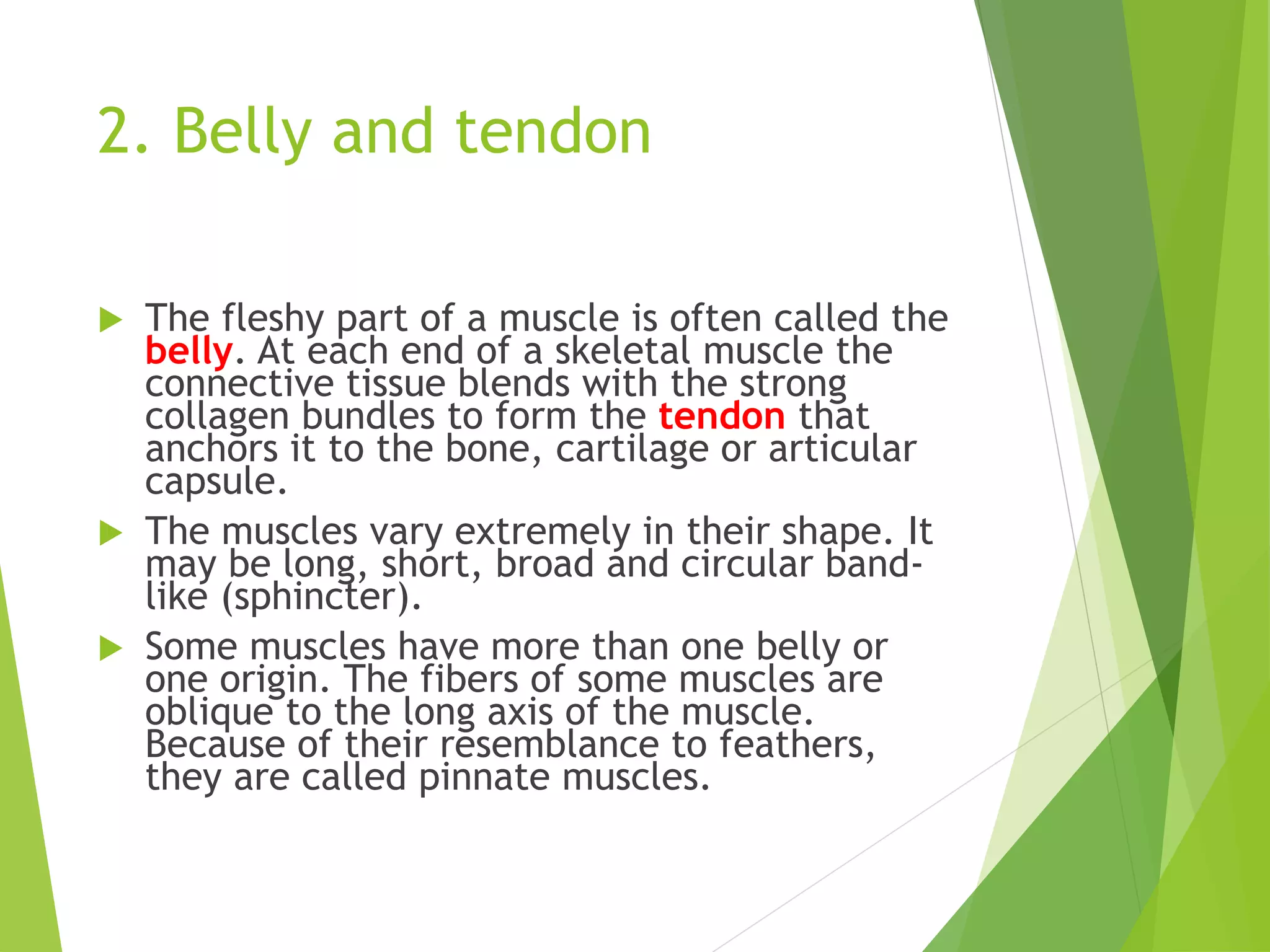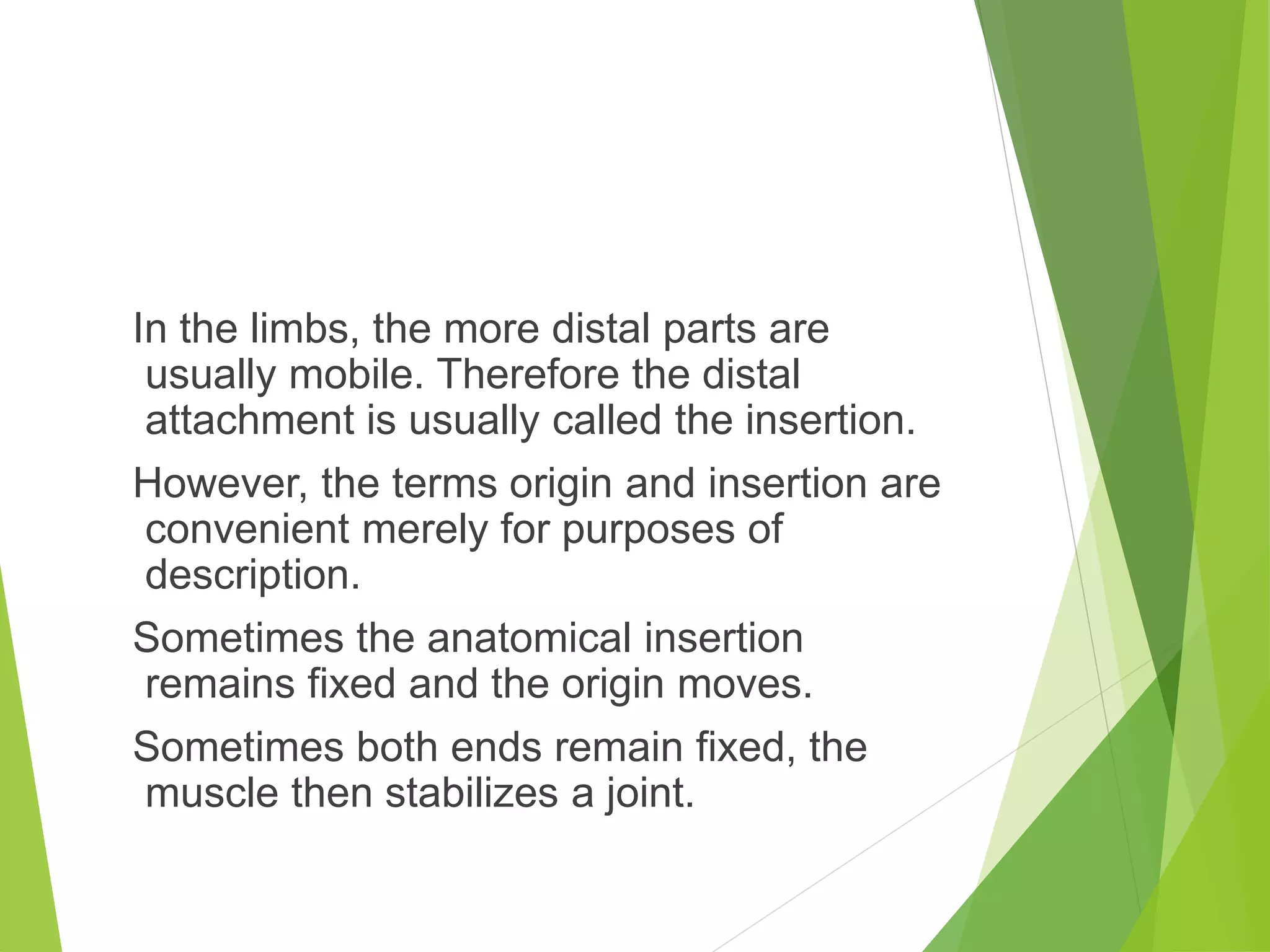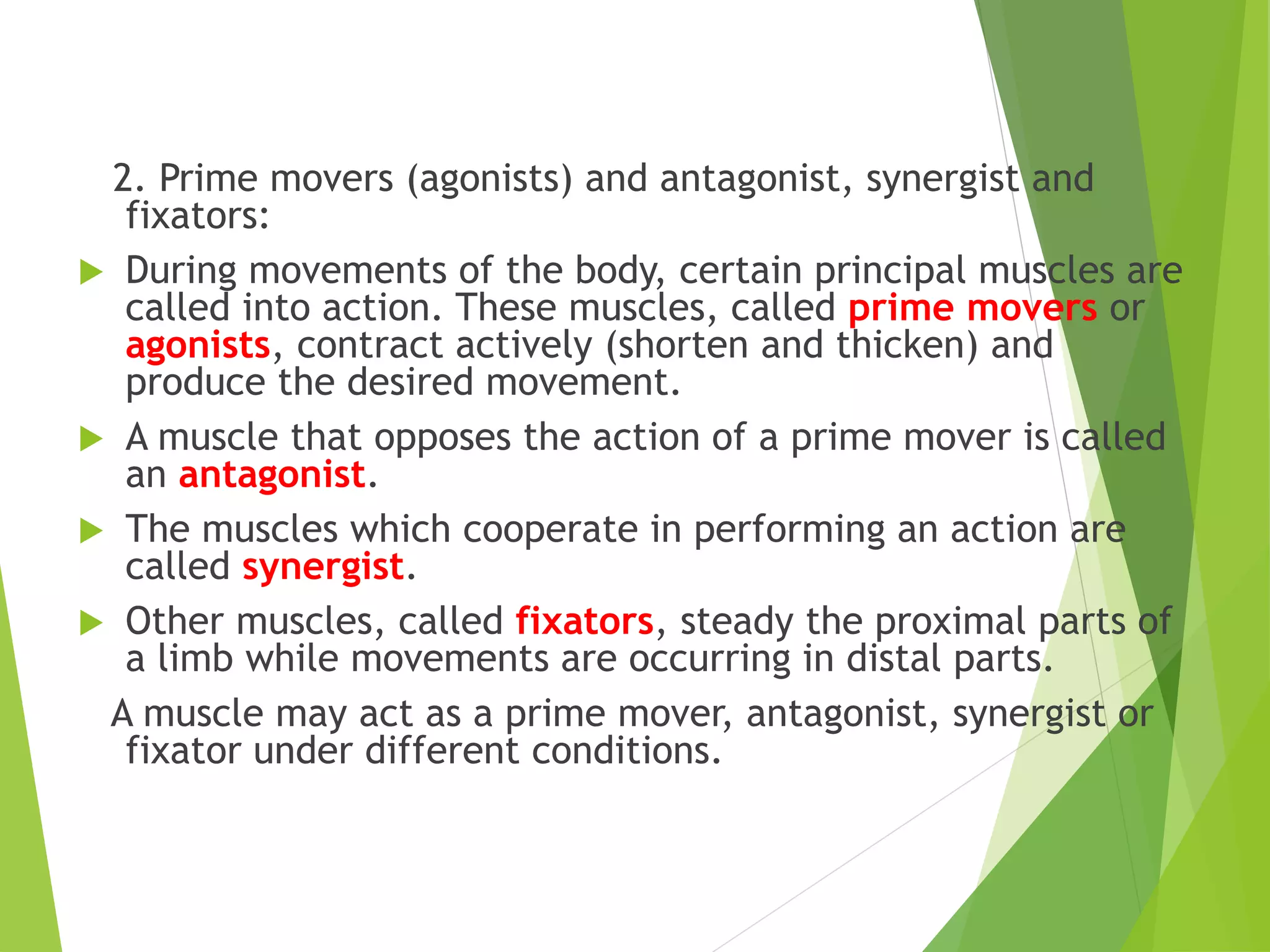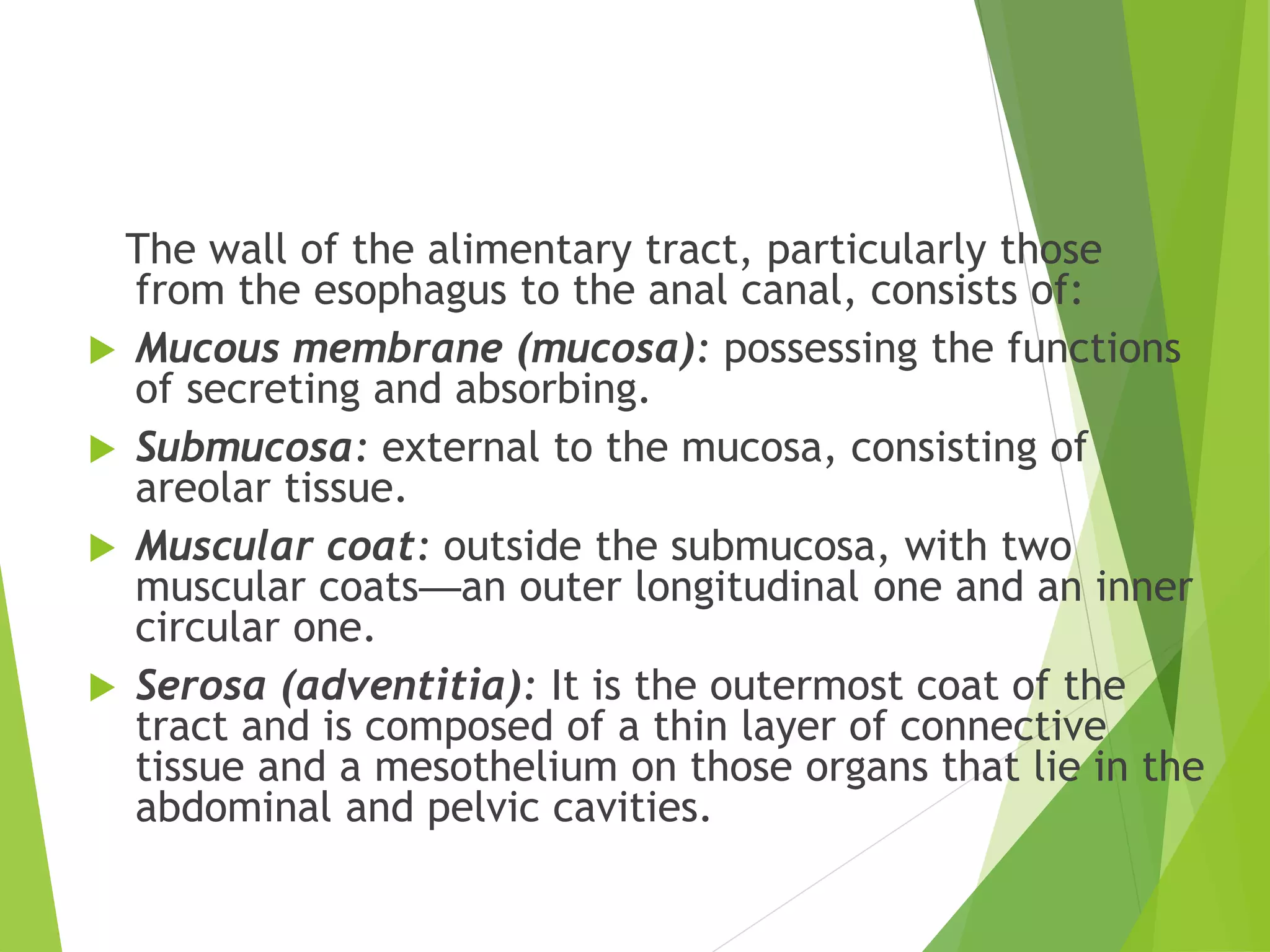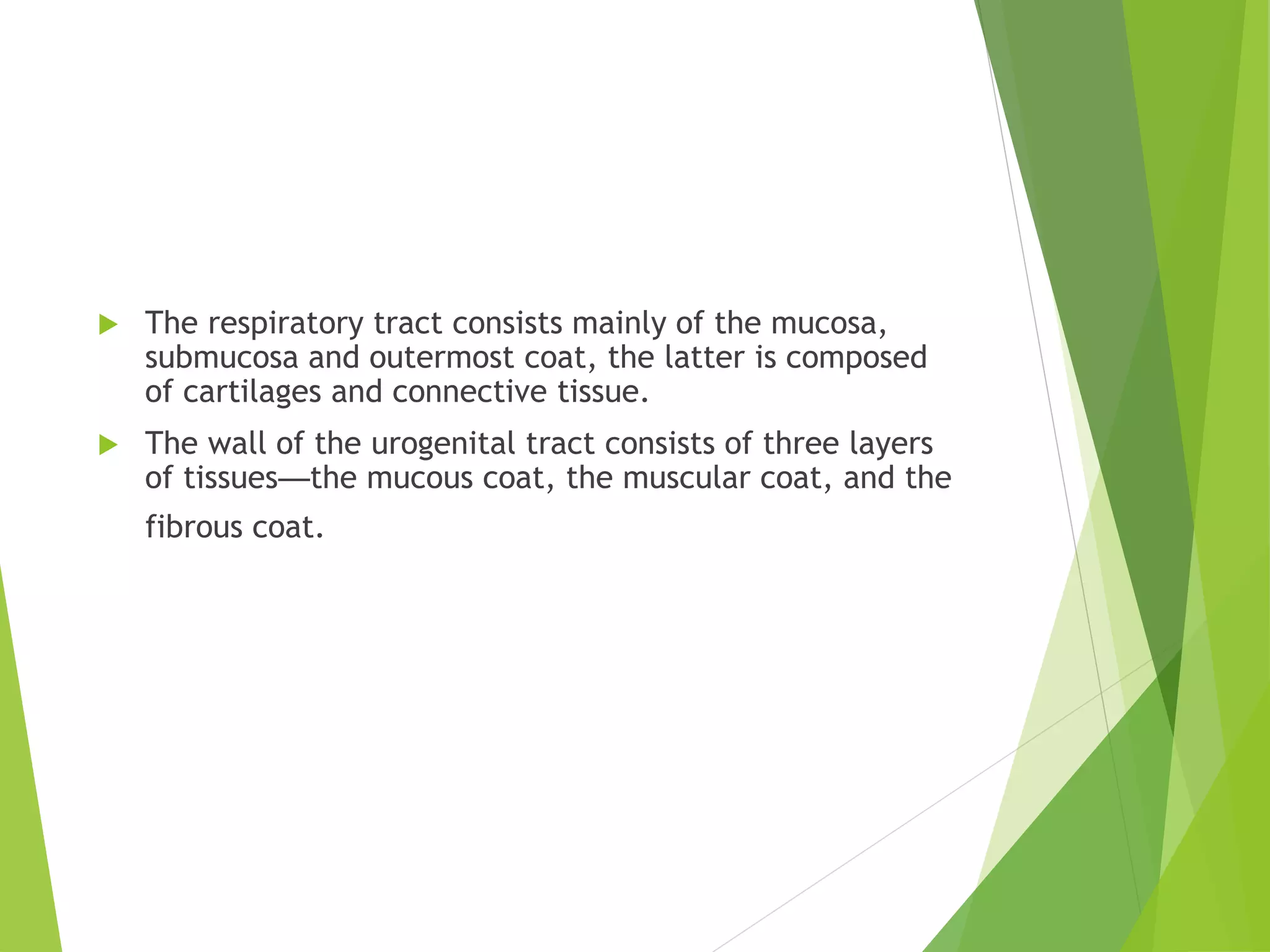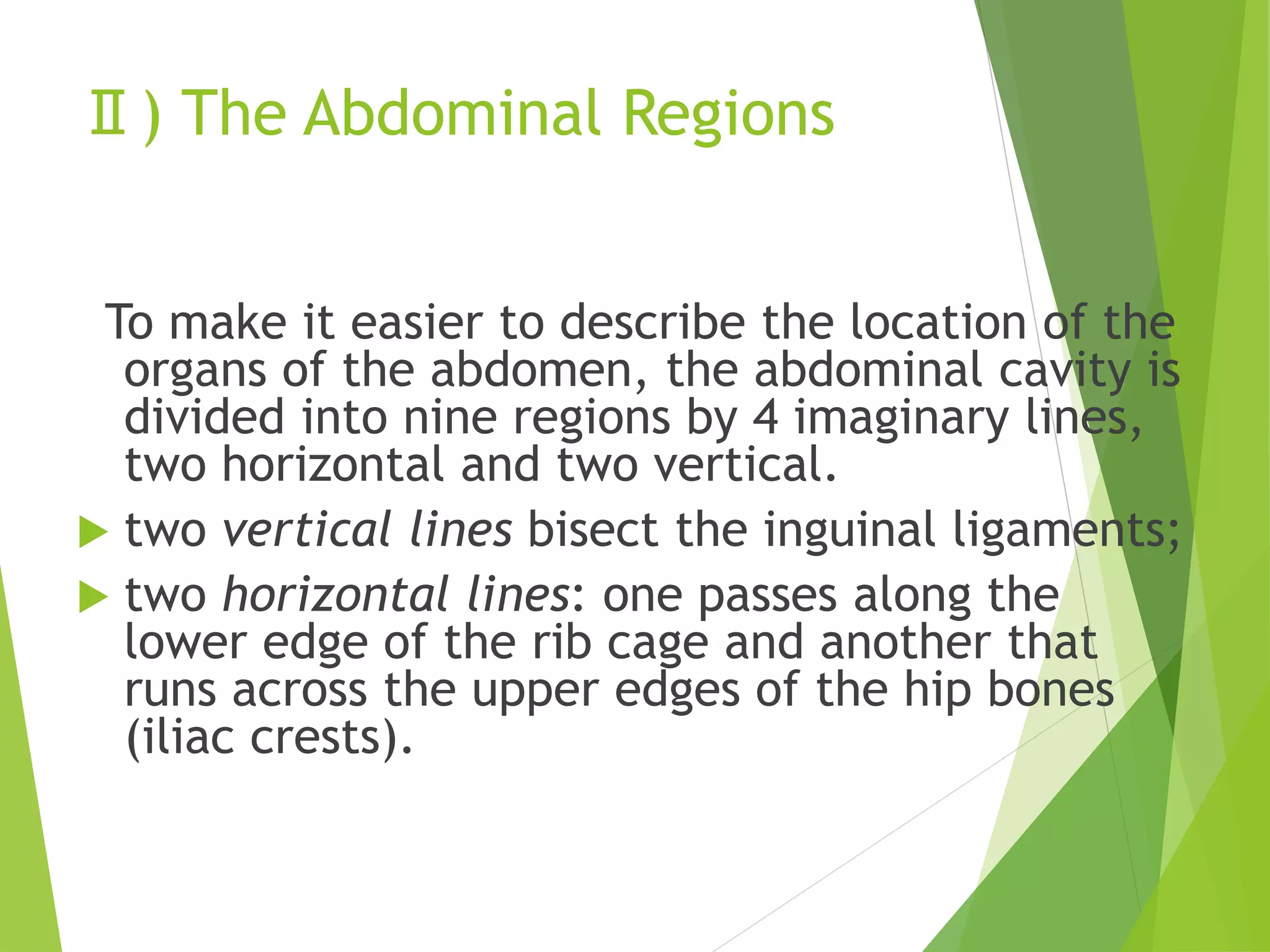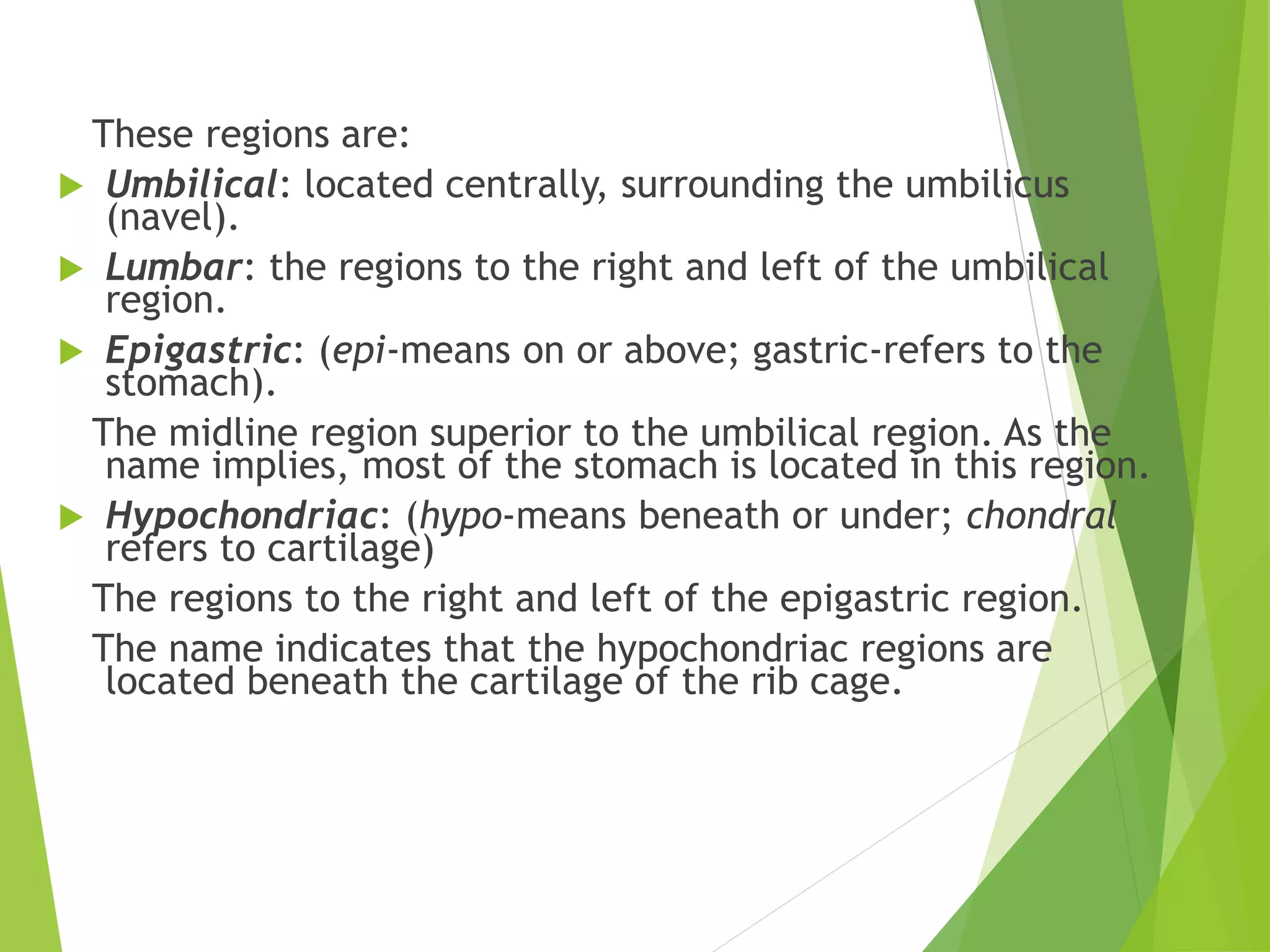This document discusses the role of pathology in diagnosis and provides an overview of myology and splanchnology. It begins by explaining how pathology helps establish diagnoses through the examination of specimens and use of special techniques. It then provides introductions and overviews of the topics of myology, which is the study of muscles, and splanchnology, which is the study of viscera. Key aspects of muscle and visceral anatomy are summarized such as muscle types, layers of the gastrointestinal tract wall, and reference lines used to describe abdominal regions.













